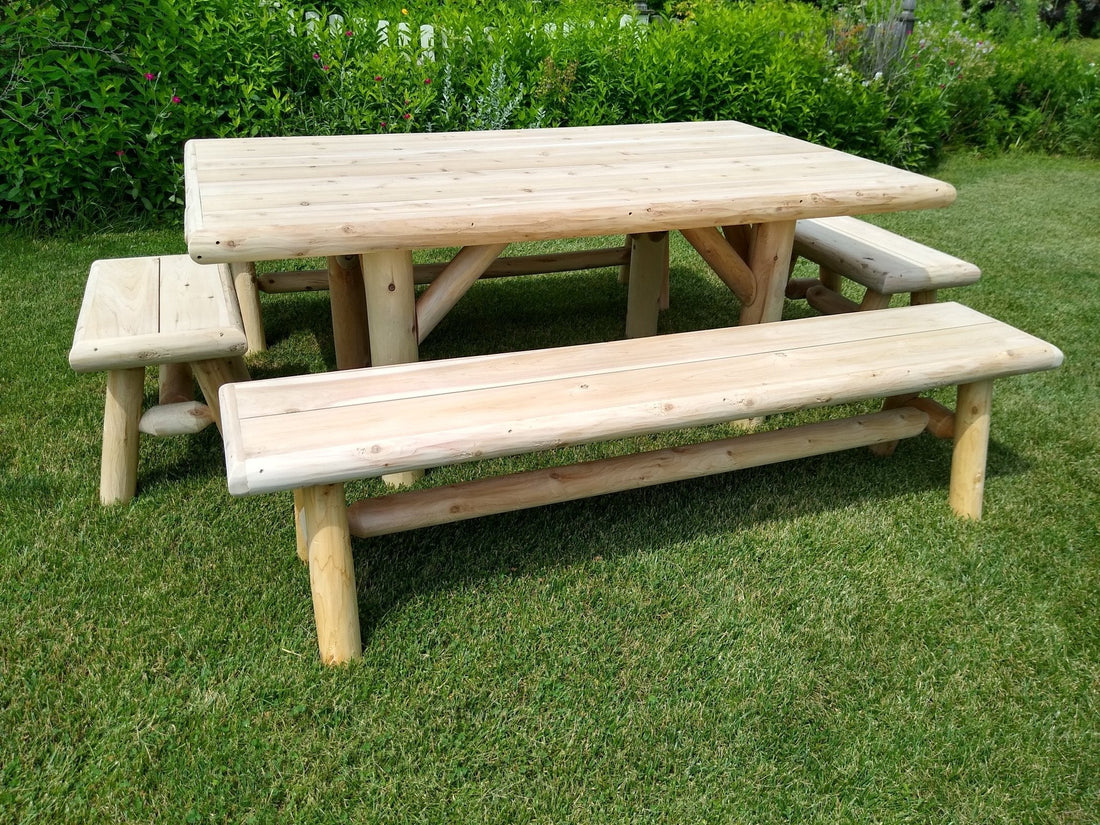
How to Protect an Outdoor Wood Dining Table
Share
Outdoor dining tables bring natural beauty and warmth to your patio or deck, but they face constant challenges from weather, UV rays, temperature fluctuations, and everyday use. Proper protection is essential to ensure your table remains beautiful and functional for years to come. Here's a comprehensive guide to protecting your outdoor wood dining table.
Initial Protection for New Tables
When you first purchase or build an outdoor wood table, it's crucial to establish proper protection before exposure to the elements. Start by thoroughly sanding the entire surface with progressively finer sandpaper (beginning with 120-grit and working up to 220-grit) to create a smooth base for your protective finishes. Once sanded, remove all dust using a tack cloth or slightly damp rag.
For new unfinished tables, apply a high-quality exterior-grade wood sealer or preservative as your first layer of protection. Products containing UV inhibitors are particularly valuable for tables that will receive direct sunlight. Apply the sealer following the manufacturer's directions, typically using a natural-bristle brush or lint-free cloth and working in the direction of the wood grain. Allow this base coat to dry completely usually 24 to 48 hours before proceeding to the next step.
Choosing the Right Protective Finish
Selecting the appropriate protective finish depends on your table's wood type, your climate, and your aesthetic preferences. The main options include:
Marine-grade varnish provides exceptional water resistance and UV protection, making it ideal for tables near pools or in rainy climates. It creates a hard, glossy shell that's highly durable but does require maintenance every 1-2 years.
Exterior polyurethane offers excellent protection against scratches, spills, and moderate weather exposure. Water-based versions are less toxic and easier to apply, while oil-based varieties provide superior durability and a richer finish. Expect to reapply every 2-3 years depending on exposure.
Exterior-grade penetrating oil, like teak or linseed oil, enhances the natural beauty of the wood while providing moderate protection. These oils penetrate deep into the wood fibers rather than forming a surface film. They're easy to apply but need more frequent reapplication typically every 3-6 months for tables in direct weather exposure.
Exterior paint provides the most comprehensive protection against moisture and UV damage, completely sealing the wood surface. While this sacrifices the visibility of the natural wood grain, it offers the longest-lasting protection, often 5-7 years between maintenance coats.

Application Techniques for Best Results
Regardless of which finish you choose, proper application is key to effective protection. Apply at least three coats of your selected finish, allowing proper drying time between coats as specified by the manufacturer. Lightly sand between coats with 320-grit sandpaper to ensure adhesion and a smooth finish.
When applying finishes, work in moderate temperatures (between 50-85°F) and low humidity for optimal results. Avoid application in direct sunlight, which can cause the finish to dry too quickly and create an uneven appearance. Apply thin, even coats using long, continuous strokes in the direction of the wood grain to minimize visible brush marks.
Pay special attention to the end grain of the wood (the cut ends of the boards), which absorbs more finish and moisture than the surface grain. These areas often need an extra coat or two for adequate protection.
Seasonal Maintenance
Regular maintenance significantly extends the life of your outdoor table. Develop a seasonal protection routine for ongoing care. Before summer, inspect your table thoroughly for any signs of finish deterioration. Clean the surface with a mild wood cleaner and apply a maintenance coat of your protective finish if you notice the existing finish becoming dull or thin.
Before winter, thoroughly clean the table and apply a fresh coat of protectant if needed. In harsh winter climates, consider moving your table to covered storage or using a high-quality outdoor furniture cover designed to allow airflow while protecting from moisture. If using a cover, ensure the table is completely dry before covering to prevent mold and mildew growth.
Daily and Weekly Protection Practices
Beyond seasonal care, implement daily and weekly habits to maximize protection. Use coasters, placemats, and tablecloths during meals to prevent water rings and food stains from contacting the wood surface. Wipe up spills immediately, especially acidic liquids like wine or citrus juices that can damage finishes.
Establish a weekly quick-clean routine using a soft cloth dampened with water and mild soap. Follow with a dry cloth to prevent moisture from sitting on the surface. Keep the table clear of debris like leaves and pollen, which can trap moisture against the wood and lead to staining.
Adjust umbrella positions throughout the day to ensure even sun exposure, preventing uneven fading. Consider using tablecloths with UV protection for additional defense against sun damage during periods of intense sunlight.
Addressing Minor Damage Promptly
Even with excellent protection, minor damage can occur. Address these issues quickly to prevent them from worsening. For small scratches, use a touch-up pen matched to your finish color or a small amount of your original finish applied with a fine artist's brush. For deeper gouges, consider wood filler followed by careful sanding and refinishing of the affected area.
Water stains can often be removed with a mixture of equal parts white vinegar and olive oil applied with a soft cloth. For stubborn stains, gentle sanding followed by spot refinishing may be necessary.
Long-Term Protection Strategy
Develop a long-term protection strategy based on your table's exposure level. Patio tables may need full refinishing only every 3-5 years, while those with full weather exposure might require refreshing annually. Schedule a complete refinishing (stripping the old finish, sanding, and applying new protective coats) when you notice significant deterioration like cracking, peeling, or bare wood exposure.
By implementing these protection measures, your outdoor wooden dining table can remain beautiful and functional for many years, continuing to be the centerpiece of countless outdoor gatherings regardless of weather challenges.
